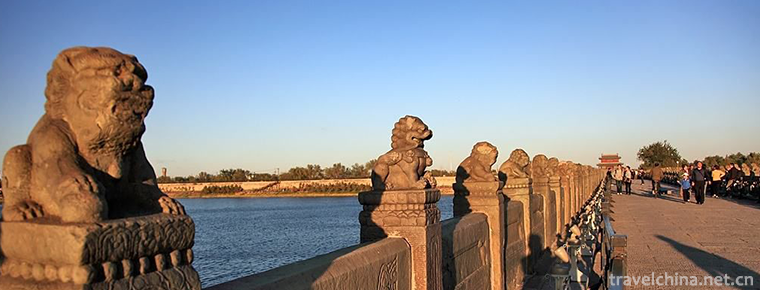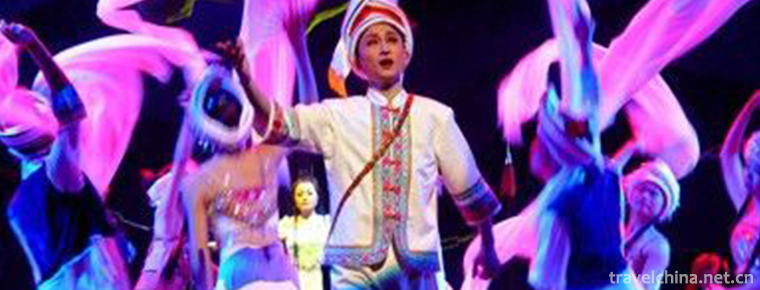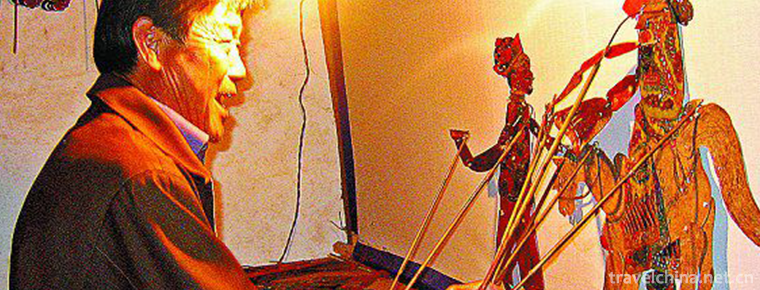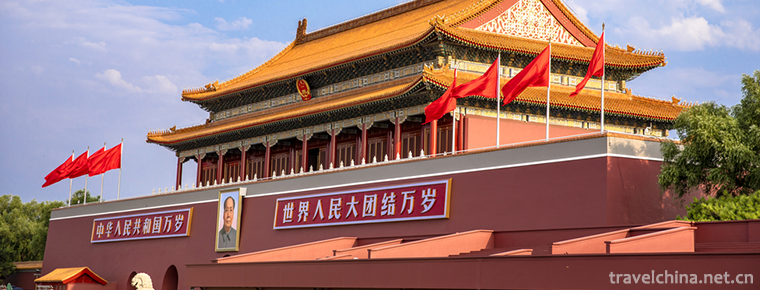legend of butterfly lovers Liang Zhu
Legend of Liang Zhu (Legend of
Liang Shanbo and Zhu Yingtai) is a sad and moving love story. It is also called
four ancient Chinese folklores with Meng Jiangnu, Niulang Zhinu and White Snake
Biography. Among them, the legend of Liang Zhu has the greatest influence. It
ranks first among all kinds of folklores in terms of literary, artistic and
ideological aspects and is the most influential oral inheritance art in China.
Shu is also the only ancient Chinese folklore in the world.
Legend of Liang Shanbo and Zhu Yingtai is often called "Romeo and Juliet of the East". The legends of Liang Shanbo and Zhu Yingtai are one of the four major Chinese folklores, a treasure of Chinese culture and a wonderful flower in the forest of Chinese folklore and art. In 2006, it was selected as the first national intangible cultural heritage list.
historical origin
Specifically, the earliest existing literary materials of Liang Zhu's legend can be found in the Song Dynasty Zhang Jin's "Four Ming Tu Jing" quoted by Liang Zai in the early Tang Dynasty, "Ten Dao and Four Bo Zhi": The Tomb of Righteous Women, that is, the place where Liang Shanbo Zhu Yingtai was buried together. After Xishili Reception Courtyard, there was a temple. It used to be that they had fewer classmates than three years ago, but Shan Bochu didn't know that Yingtai was a woman. Its simplicity is so. According to "Shidao Sibo Zhi", it is said that "the righteous woman Zhu Yingtai and Liang Shanbo share the same grave". This legend was circulated among the people at that time with plot content. Unfortunately, Liang's record was too brief to be true. However, it can be concluded that Liang Zhu's legend may have evolved from a real historical event. By the late Tang Dynasty, Zhang Shu's Xuan Shi Zhi recorded the basic plot of the legend: Yingtai, Shangyu Zhu's daughter, disguised as a man's travel study, and went along with Liang Shanbo, Shanbo and Zhiren. Hope to return first, two years, Shanbo visited, only to know that she is a woman, disappointed if there is a loss. Tell his parents to apply for employment, and Zhu Jizi's son. After Shanbo, he died of illness and was buried in the west of the city. Zhushi Ma Shi, boat crossing the tomb, wind and waves can not enter. Ask Zhishan Bo tomb, Zhudeng number, ground suddenly from the rift, Zhu Sui and buried. The Tomb of Xie An Biaoju, Prime Minister of Jin Dynasty, is called the Tomb of a Righteous Woman. It has been clearly pointed out in Zhang's records that the legend of Liang Zhu originated in the Eastern Jin Dynasty. From the tomb of Xie An Biaozuo, Prime Minister of Jin Dynasty, known as the Tomb of a Righteous Woman, the people believed in the truth. Because Liang Zaiyan and Zhang Duan were both Tang Dynasty people, the legends they recorded had at least been circulated orally among the people before they could attract the attention of literati and be recorded in local chronicles. Besides, folklore must go through a long process of development before it can be widely spread. The era of its emergence was reasonably pushed up to the Six Dynasties. The clues provided in Xu Shupi's Shixiaolu in Ming Dynasty can verify this point: "According to Liang Zhushi, it's different,"Jinlouzi"and"Huiji Bizarre News"are both contained. "Although there is no such record in Jinlouzi compiled by Yongle Dadian, I believe Xu's words will not be fabricated without foundation. Golden House
It is the work of Emperor Liang and Yuan Xiaoyi. Xiao Yi lived in 505 - 554 A. D. and wrote many works in his life. His poems and essays were "light and beautiful". Liang Zhu's "love history" should also be his content. Xu Shupi's words also point out the legendary area of Liang Zhu. It is the "anecdote of the auditor", which means that it happened in the "auditor", not in other places. From this, we can basically conclude that the legend of Liang and Zhu originated in Ningbo area of the Eastern Jin Dynasty.
The above mentioned literary materials about Liang Zhu's legends are generally relatively simple. The earlier and more complete story of Yizhong King's Temple by Li Maocheng of Song Dynasty (who knows about Mingzhou in Song Daguan) is that of God's taboo on benevolence, Zishanbo, Liang's surname, and Huiji people. Mother of God dreams, pregnant in December, when the Eastern Jin Dynasty, Yonghe Mudi and Renzi March 1, born in Fenrui. Young wisdom is strange, long schooling, good grave. Taste from a famous teacher, Qiantang, Dao Fengzi, tolerance Duanwei, bearing the burden. "Who is Zi for?" he asked. "Say:" surname Zhu, name Zhenzhen, word Xinzhai. "Say:" Xi Zi? "Say:" Shangyu Township. "Say:" Xi Shi? "Say:" Shi Shi is near you. "Discuss the theme with him calmly and feel at ease. God said, "Home mountains are connected, so they are insensitive to each other. They can climb fish with wings. "So I am happy to go with you. After three years of schooling, I wish my family the best. In the next two years, Shanbo returned to the province. On top of that, visit Xinzhai and cite the ignorant. "I know that," he said with a chuckle. Good text, its Zhu Nine Niang Ying Taiyu? "Introducing by the door, poetry and wine are different. Shanbo was sad to know that she was a woman. He returned to admire his innocence and appealed to his parents for marriage. However, he had Xu Chenglangtou, Ma Shi and Fok. The God sighed and said, "Life is a feudal lord, death is a temple food. What is the foothold of a district? "Emperor Jianwen cited the virtuous, and the county took God's call and imperial edict as its order. The infant was sick and asked the waiter to say, "The ruins of Jiulong in Daoyuan of the Western Qing Dynasty are also the places of burial. "Look and die. Ningkang Guiyou is also on the 16th of August. The countrymen are becoming more and more familiar with it. In the second year of the Ming Dynasty, in the late spring of 1911, C Zi, Zhu Shi Ma, came to the west by the current, the waves were thriving, and the boat navigation was lingering. Ask the barn master horribly. He said, "No other, the new tomb of Shan Bo Liang Ling, is it not strange? "Yingtai was buried in mourning, and the ground was cracked and buried. From the frightened skirt, the wind is like clouds flying, to Dongxi Xiyu and fall. Ma Shi's official opening, giant snake mound, fruitless. The Prefecture heard strange stories in the dynasty, Prime Minister Xie Anzuo asked for a righteous woman's grave, Leshi River left. By Andi Ding Youqiu, Sun Enkou, and the demon party abandoned the stele in the river. Taiwei Liu Yu asked for help. God was Mengyu's help. Night fruit beacons were brilliant. Armor armour was invisible. Thieves fled into the sea. Yujia has heard that the emperor assisted the emperor with gods and praised the "holy king of righteousness and loyalty" so that there was a commander-in-chief temple Yan. The more Liang Wang Temple, the more there are two yellow skirt fairs in Xiyu. Every drought, flood and epidemic among the people, unexpected business trips, and prayers should be answered. In the spring of the first year of the Song Daguan Dynasty, the imperial edict collected Jiuyu Tuzhi and Shidao Si Fan Zhi, which can be verified by facts. Husband reporter, Ji Ye, to record the immortal Yuner of its transmission. The words for it are: students and teachers are the same, and people are right. Death is in harmony with death and marriage is in harmony with nature. God's contribution to the country is to the people. Shiwen Yizhong, to worship, immortal fame, new and new. (See Yinxian Chronicle of Qingwen Sexual Dao). In this temple chronicle, complete legendary plots are preserved. These plots are basically the same as those of Liang Zhu legends, which are now popular among the people. In addition, the year of Liang Shanbo's birth and death and the time of erecting the temple are clearly recorded. Although it can not be fully believed, it has certain reference value for inferring the time when the legend came into being. Yonghe Renzi of Mudi was Yonghe eight years (352 years); Emperor Jianwen reigned for two years, namely, the first year of Xian'an (371 years) and two years; Ningkang You was the first year of Ningkang of Emperor Xiaowu of the Eastern Jin Dynasty (373 years); and Dingyou of Andi was the first year of Longan (397 years). That is to say, Liang Shanbo was born on the first day of March in the 352 lunar calendar and served as county magistrate in 371 or 372. He died on the 16th August of the 373 lunar calendar. Zhu Yingtai married in the late spring of 374. Liang Shanbo Temple was built in 397. If the records are reliable, we can roughly think that the legend of Liang Zhu came into being in the period of more than twenty years from 374 to 1997. Because the legend of Liang Zhu can not be originated and spread until the facts of the legend itself produce results. For example, the legend of Liang Zhu is always a "secret" or a very small-scale fact during the period of Zhu Yingtai's "women dress up as men", "Caoqiao tie worship", "three-year classmates" and even "terrace meeting". It is impossible to spread legends abroad or widely in this period, so no matter how legendary "women dress up as men" is, how entangled "terraces meet" will not immediately produce legends. Only when Zhu Yingtai's tomb was sacrificed "to die of martyrdom", the legend showed itself in the mountains and water, gradually in broad daylight. The local people were shocked by this sudden "incident" and began to explore and inquire, so the folks began to legend the sad and moving scenes of their lifetime. Or "Ma Yanzhi's official, the story is heard in the dynasty, Prime Minister Xie Anzuo Fengyi Women's Tomb" after the Liang Zhu miracle gradually spread among the people. Then through the continuous processing and enrichment of folk artists, it deduced a classical legend that has been circulating for thousands of years.
The legend of Liang Zhu has
basically taken shape, but there is no end of "turning butterflies into
butterflies".
Since then, more important documents have been recorded in Feng Menglong's "Li Xiuqing Yijie Huang Zhennu" of Ming Dynasty and Shao Jinbiao's "Zhu Yingtai Biography", especially the latter's "butterfly" ending: Zhu Yingtai, Xiaozijiuniang, Shangyu wealthy daughter. Born without brothers, they are both talented and beautiful. Parents want to choose a spouse, Yingtai said: "Children go out to study, get the ears of wise men. "Because of changing men's clothes, it was renamed Jiuguan. When he met Liang Shanbo of Huiji, he also traveled to study, and then lived together with the beautiful rock of Shanquan Temple in Yixing. For three years, Liang did not know she was a woman. Farewell to Liang, about to say: "On a certain day, you can visit, will tell the mother, wife and monarch. "In fact, it's a promise. The Liang family was poor, shy and afraid of doing things, so it reached the stage of derivation. Parents have Maltese sons in English. Hou Liang was Yin Ling, and Zhu Jia consulted nine officials. The boy said, "There are nine mothers in my family, but no nine officials. "Liang Jingyu, with the friendship of his classmates begging for a glimpse. The Yingtailuo fan covers the face and comes from only one clip. Liang died in remorse, and his last words were buried at the foot of Qingdao Mountain. In the second year of the Ming Dynasty, Yingtai will return to Mahalanobis and order Zhouzi to bypass it. When the storm broke, the boat moored. Yingtai was in front of the tomb of Liang Dynasty. She was silent and crying. She suddenly cracked and fell into the cocoon. Embroidered skirts, butterflies fly away. The Prime Minister Xie An heard about his affairs in the dynasty. Please make it a tomb for a righteous woman. This is also the current situation in the Eastern Jin Dynasty. When Emperor Qihe was emperor, Liang Fu showed his ingenuity and helped in the war. Some of them built a temple in Yin and offered sacrifices to Liang Zhu. Its reading house is called Bixian Temple. During the reign of Qi Jianyuan, the temple of good power was changed. There are stone inscriptions in the temple. The large book "Zhu Yingtai Reading Office". Lixu in front of the temple, the village name Zhuling. When the azalea blossoms in the mountains are blooming, there are big butterflies flying in pairs, and folklore is the soul of the two. Today, Dacai butterfly is still called "Zhu Yingtai" cloud.
Although the plot of "turning butterflies into butterflies" has already been used in Xue Jixuan's poems in the Song Dynasty as "butterflies dance to solidify mountains, flowers bloom to think of jade beauties", at this time, combining with the local environment, a vivid ending is organically formed, thus pushing Liang Zhu's legend to a new height. Another contribution of this record is to highlight the background of the Eastern Jin Dynasty. At that time, due to the system of the scholar clan, people of equal rank were able to intermarry. Young men and women in such a strict class antagonism, even though they are predestined to know each other and admire each other, but because of the family, identity and other relations, marriage is involuntary. Liang Zhuzhi couldn't get married. I'm afraid that the legend says that Liang Shanbo was born in a poor family and postponed the date of marriage and engagement until he later made a county decree to visit friends in Zhuzhuang, which is one of the main reasons. At that time, there was the saying that there was no cold door for the top and no clan for the bottom. If Liang Shi, Wang Yuan married his daughter to the Fujia Manchu family. Shen Yue went to the table to impeach him, saying that Wang Yuan insulted the scholar stream, and scolded the Manchu family as "non-self race". In the past, the written records of Liang Zhu's legends were not specific enough to reflect the background of the Six Dynasties.
It was not until the Ming and Qing operas, singing books and folk songs, and finally the small ones, that this historical background was gradually clearly expressed. It can also be said that the legend developed here (referring to the written materials) before it fully revealed the socio-economic root of its emergence. The legend of Liang Zhu really came into being. Therefore, from the existing materials, the complete formation of Liang Zhu's legend was from the Song Dynasty to the late Qing Dynasty.
primary coverage
Liang Zhu is a beautiful, sad and moving story. There are many authoritative experts and scholars who have verified the existence of Liang Shanbo and Zhu Yingtai. Moreover, the love story between them is also a real event in history, and there are many historical materials and historical relics to support it. It is generally believed that it was formed in the Eastern Jin Dynasty. Where Liang Zhu originated has been controversial since the beginning of history. Famous statements include: Ma Township in Runan County, Ma Township in Jining City, Shandong Province, Ma Po Township in Jining City, Jiangsu Yixing, Ningbo in Zhejiang Province, etc. Among them, the graveyard sites of Ma Township in Runan County are located on both sides of the ancient Beijing and Han official roads, and there are still remains. The graves of Jining City are located in Ma Po Village, Ma Po Township, Tang During the reign of Dai Wude (618-626 A.D.), there was a tomb of Liang Zhuhe in Mapo, Zouxian County, Jining City (now Weishan County), and a stone tablet of "Tomb of Liang Shanbo Zhuyingtai". When Shi Cui Wenkui, the emperor of Ming Dynasty, the right Minister of Nanjing Ministry of Industry and the right deputy of the former inspector, visited Jining Mapo, he found that the tomb of Lao Liang Zhu built in the Tang Dynasty was dilapidated and worn down. The tombstone was erected in 2003. In a very short time, it has attracted great attention and attention from experts, scholars and news media at home and abroad. In addition, there are also remains of Liang Zhu's cemetery in other parts of the country. The story shows the marriage tragedy of a young man and a young man who failed to combine hatred under the feudal system. The earliest documents recorded in Liang Zhu's legend can be found in Liang Zaiyan's Shidao Si Fan Zhi in the early Tang Dynasty.
Historical legends
Henan Runan Edition
According to the textual research of historians in Wei and Jin Dynasties, the story of "Liang Zhu" originated in Ma Township, Runan County, Zhumadian City, Henan Province. There are Liang Zhu Tombs, Liangzhuang, Zhuzhuang, Mazhuang, Hongluoshan Academy, Yuanyangchi, Shidao Road, Caoqiao (Caoqiao) and Zou You Tomb, where Master Liang Zhu was buried.
From Hongluoshan Academy to Zhu Yingtai's home, it's exactly 18 miles from Hongluoshan Academy to Liangshan Bojia, which is also about 18 miles. Therefore, there is the plot of "sending each other eighteen".
These 18 miles are full of romance and beauty. For Liang Zhu, these 18 miles seem too short and too short.
The ancient official road in Beijing and Han Dynasty mercilessly separated Liang and Zhu tombs. "Ghosts can't walk on dry roads, they can only walk on water roads. Although Liang and Zhu are very close, they can only look at each other separately but can't meet each other." In ancient times, in order to facilitate the meeting of Liang Shanbo and Zhu Yingtai, people dug a 200-meter-long ditch on both sides of the road and built a bridge to connect the two ditches. At the same time, a small bridge was built on the ditch beside Liang Shanbo's tomb and on the path in front of Zhu Yingtai's tomb. In this way, within one step (6 feet), three small bridges are crowded together, which is called one-step three-hole bridge. In this way, both the living and the dead have their own ways. Unfortunately, the bridge beside the tomb of Liangshan Bo was demolished. Today, the bridge connecting the ancient official road of Beijing and Han Dynasty with the tomb of Liangshan Bo is a `gully dam'.
Zhu Yingtai inquired about the way to Hongluoshan Academy all the way. A lady pointed West and said to her that she would walk to Caoqiao (not Caoqiao, which is a legend of Caoqiao. Caoqiao is a small bridge built by a village surnamed Cao in the south of the village. Caoqiao is used all the way down to the south, which is Hongluoshan.
Liang Zhu met at Caoqiao, with the bridge as the main (god), the earth as the stove, the grass as the fragrance, and the brothers-
Our brother Cao Qiao worshiped and went forward to support the book (here used the ambiguous word "support"). Our brother Hongluoshan went to attack the book. In February, apricot blossoms and apricot blossoms grew white (expressing the wish to live together with old people). Our brother Hongluoshan went to read Wencai (see, the name of Ma Wencai, the third one, appeared intentionally or unintentionally). In March, peach blossoms and peach blossoms turned red, and my brother Hongluoshan studied the Five Classics hard...
The scenery around Caoqiao is not romantic - the roads are muddy and weedy. But as far as I can see, the road of "Eighteen Sendings" is trenched and depressing. The trees beside the road are towering, and the crops in the fields are green and beautiful.
Shandong Weishan Edition
According to the textual research of Fan Cunchang, deputy director of Jining Municipal Bureau of Cultural Relics, president of Liang Zhu Research Association and famous expert of Liang Zhu Culture in Jining City, Shandong Province, Liang Shanbo and Zhu Yingtai include Ma Wencai. There are indeed some people in history. The stories between them are true historical events, and their places of origin are in the hometown of Confucius and Mencius.
During the reign of Tang Wude (618-626 A.D.) in Ma Po, Zouxian County, Jining City (today's Weishan County), there was a tomb of Liang Zhuhe and a stone tablet of "Tomb of Liang Shanbo Zhuyingtai". In the Yuan Dynasty, there were seven statues of Liang Zhuyingshan in Liangzhu Reading Office, Jining City. Chen Yunqin's Youyaoshan wrote "Zhuxiang of Wanshougong Palace": "Letter is the end of two glories, and the idle flowers and weeds are empty. The hearts of the people are sour, like a pair of Longevity Palace. Ma Po is the home of Zhu and Ma. In Ma Po Village, west of ancient Zouyi, near the Bank of Weishan Lake, there was Liang Zhuhe tomb in Zou County, Jining City (present Weishan County) during the reign of Tang Wude (618-626 A.D.).
The tombstone has been buried for a long time. On October 27, 2003, the Liangzhu Culture Research Association and the Weishan County People's Government of Jining City, Shandong Province, solemnly held the ceremony of "rebuilding the tombstone of Liangshan Bozhu Yingtai". This is the only tombstone among the nine existing tombs of Liangzhu in the whole country. Cui Wenkui is the emperor of the Ming Dynasty, the right assistant of the Ministry of Industry of Nanjing, and the right deputy of the former inspector. Du Royal History is the highest official position, the most important position and the most authoritative one among the official figures who witnessed Liang Zhu's hometown in Chinese history. Mr. Liu Kuili, researcher of the Chinese Academy of Social Sciences and chairman of the Chinese Folklore Society, Ms. He Xuejun, researcher of the Chinese Academy of Social Sciences and vice-chairman of the Chinese Folklore Society, Mr. Li Wanpeng, former chairman of the Shandong Folklore Society, Mr. Ye Tao, vice-chairman of the Shandong Folklore Society and director of the Institute of Folklore of Shandong University participated in The unearthing of this monument has aroused great concern of the news media. Many domestic news media, such as CCTV, People's Daily, Xinhua News Agency, Daily Popular, Qilu Evening News, and other foreign news media, have reported on it. In a short period of time, it has caused a great sensation at home and abroad and caused great sensation in the world. Great concern. This is the only tombstone in nine Liang Zhu tombs in China, 843 words in the full text, which is quite different from the myths, legends and operas. It not only shows the place where the two people are buried together, but also points out the reasons why the local officials instructed them to be buried together. According to the inscriptions, Zhu Yingtai, as the only daughter, went out to study at Yashan Mountain in Zoucheng as a man. She met Liang Shanbo in the east of Wuqiao in Jiuqu Village. They shared the same job and taught at Yashan Mountain. They slept together in the day and at night. They were puzzled for three years. She was a good scholar. One day when Yingtai returned home from homesickness, Shanbo learned the truth and visited his door. After that, he finally came home and was buried in the east of Wuqiao (according to Zouxian Zhizai, the bridge was submerged during the Ming Longqing Period). Yingtai saw Ma's family approaching and thought deeply about Shanbo, so she sacrificed herself for righteousness and died in sorrow. The local Party official called it his commanding day and buried Shanbo's tomb.
According to inscriptions and field investigations, the legendary story of Liang Zhu is in Jining. The reason is that in terms of time, Ma Po Stone Stele is the earliest record of Liang Zhu's story. Not to mention that the monument is recorded in foreign records, even in the eleventh year of Zhengde, it is much earlier than Ningbo Fuzhi and Yixing Zhi in the late Qing Dynasty; from the geographical perspective, it is in line with the reality that Liang Zhuhe's tomb is located in the southwest of Ma Po Village, about three kilometers from Jiuqu Village in the north of Zhu Yingtai, and about ten kilometers from Boliang Village in the southeast of Liang Shanbo, if Zhu Yingtai goes to Fushan to study. It is reasonable to cross Wuqiao and meet Shanbo. Fan Cun often believed that according to the inscriptions on the tomb tablets of Liang Zhu, the story should have originated in the Han Dynasty at the earliest. In the Wei and Jin Dynasties of the Three Kingdoms, there was no social background for such stories. The system of selecting officials could not let Liang Zhu pursue the road of studying and becoming an official. Only social stability and Confucianism dominated the Han Dynasty had the soil for Liang Zhu's stories. Jining is the city with the largest number of cultural relics unearthed in Han Dynasty inscriptions in China. Most of the Han Dynasty monuments in China came from Jining. As the hometown of Confucius and Mencius, Jining has a large number of Han tombs and a large number of burials, which are well-known in the whole country. The representative ones are: Jiaxiang Wu family tombs, Qufu Jiulongshan Han tombs, Rencheng Wang Han tombs and so on. These are the reflection of the social customs that paid attention to heavy burials at that time. In addition, it is particularly noteworthy that when archaeologists explored and excavated the tombs around Liang Zhu's tomb, they found many Han tombs, including pottery pots, clay people, animals and animals. Accordingly, it can be further inferred that the tomb is a joint Tomb of Liang, Zhu and Han Dynasty.
At the same time, Zhu Yingtai's village Jiuqu village found a large number of stone tablets of the Han Dynasty. Wu Qi, the propaganda officer of the Party Committee of the Mapo Township Government in Weishan County, is a fan of Liang Zhu's cultural research. He has been visiting and collecting relevant materials from local people for more than 10 years. Just after the unearthing of the tombstone of Liangshan Bozhu Yingtai, Wu Qi found another important clue. He found a small broken stone tablet of the Han Dynasty from Jiuqu Village with several inscriptions of Zhu surname on it. This small monument made him very excited, which showed that there were Zhu's family name living in Jiuqu Village in Han Dynasty. This is the proof that Liang Zhu was extremely beneficial to Jining people in Han Dynasty.
Zhejiang Shangyu Edition
The story tells of Zhu Yingtai, a talented woman in Shangyu Zhujiazhuang, who went to Hangzhou to study in a man's costume. On her way to Hangzhou, she met Liang Shanbo, a scholar who was studying in Hangzhou at the same time. So she went to Hangzhou to study together. During the three years, her classmates were inseparable and formed profound feelings. When Liang Shanbo came to Yu to visit Zhu Yingtai two years later, the truth was clear. He knew that Zhu Yingtai was his daughter. He went home and told his parents that he wanted to marry him. Unexpectedly, at this time, Zhu Yingtai had been allowed to marry Ma's family by his parents. Liang Shanbo knew he regretted it. Three years later, Liang Shanbo served as Yinxian County magistrate. After many years of love, he became sick. After his death, he was buried at the foot of the Western Qingdao Mountain in Yincheng. In the second year after Liang died, Zhu Yingtai was married. He passed through the tomb of Liang Shanbo. When he heard that it was the burial place of Liang Shanbo, he came up to the mountain to offer a memorial service. Zhu Yingtai cried bitterly and touched the world with his feelings. Suddenly, the tomb of Liang Yingtai split open a gap. Zhu Yingtai jumped into it and died in the same cave. After that, their souls turned into butterflies dancing.
Jiangsu Yixing Edition
Researcher Chang Lu Xiaonong believes that the earliest written record of Liang Zhu's stories is in Yixing. Many experts in Jiangsu academia, historiography and tourism believe that there are a lot of written and other evidences from Song Xianchun's Piling Records to Feng Menglong's Legendary Novels in Ming Dynasty, which show that Liang Shanbo and Zhu Yingtai are Yixing Ren's family.
Overseas Circulation
The earliest discoveries that have spread abroad to date belong to the neighbors of North Korea and South Korea. Recent studies have found that during the period from the Five Dynasties and Ten Kingdoms to the Song Dynasty (918-1200), Luo Jun's seven-rhythm poem "Snail Butterfly", a famous poet from Yuhang, Zhejiang Province, in the Tang Dynasty, has been compiled by people in the period of the Kingdom of Korea. Among these poems, there are "vulgar saying that a righteous wife is clothed in the form of clothes", referring to the story of Liang Zhu and clothed into butterflies In the Song Dynasty of China, the ten copies of poems edited by Koryo included not only Luo Yong's poems of "Snail Butterfly", but also a passage of "Zhu Yingtai Biography of Liang Shanbo" in the annotations. This is the earliest legend of Liang Zhu that has been spread abroad so far, and it narrates the legend of Liang Zhu comprehensively and completely from "women disguised as men" to "patchwork into butterflies" in clothes. It can be seen that Liang Zhu's culture has a long history in the world. And then it spread almost all over the Korean Peninsula.
In addition, there are other versions of legends about Liang Shanbo and Zhu Yingtai: Liang is from the Ming Dynasty and Zhu is from the Southern and Northern Dynasties, which are thousands of years apart. Zhuben is a knight-errant woman, robbing the rich and helping the poor. He has gone to Matthew three times to guard his family and steal silver. Finally, Ma Wencai, son of Zhongma, died in ambush under a random knife. The people buried it and erected a monument in front of the grave. Over time, the monument sank to the ground. Liang is a county official in Yinxian County, Ningbo Prefecture, Zhejiang Province. He is honest and honest. He lost his wife in middle age and has no children. When he died, the tombstone of Zhuzhi was unearthed. People regretted and could not bear to dismantle the tomb. However, it seems improper to bury the tomb for Liang's choice. Therefore, it is improper to co-bury the tombstone. The black one is Liang and the red one is Zhuzhi. From then on, a moving legend has been perused. According to verification, the original version of Liang Zhu belongs to two dynasties is the oral story of the people in eastern Zhejiang collected in the newspaper Shanhai Jing in 82 years. It is not a historical record. The author wrote to the editor from Cixi in 86 that "Liang Shanbo and Zhu Yingtai are the people of the two dynasties, Zhu Yingtai is a female swordsman, Liang Shanbo is a Qing official, and the graves of the two dynasties collide. The legendary story of Qiao Qiao was told to him by a local doctor who was a hawker when he was young, and the village doctor listened to the story told by an old man from Zhongshan Park in Ningbo. At that time, there were several people in the park telling Liang Zhu's love story. The old man in Yinxian shook his head and said,'It's all nonsense!'The village doctor went up and asked,'Old man, they're talking nonsense, what's the truth?' The old man in Yinxian told the story. Therefore, the author publishes the story told by the old man in Ningbo Park in the newspaper Shanhai Jing. In fact, according to the story of Anyou in Jin Dynasty, he reports to the court the story of Liang Zhu. The historical fact that the tomb of Yingtai in Fengzhu is the "mound of righteous women" and the authoritative historical records and famous literary works of the Tang Dynasty, Song Dynasty and Yuan Dynasty record their names and life stories in the Ming Dynasty, and the legend of Liang Zhu has long been recorded In the Tang and Song Dynasties, Koryo was introduced into China, and the names and life stories of the two men were recorded in Koryo's historical books in the Song Dynasty. It seems that the statement that "Liang Zhu belongs to two dynasties" is not recorded in historical documents, but the subjective imagination of the people, whose credibility needs to be discussed.
Inheritance status
The formation and development of Liang Zhu's legend can be divided into three stages. 1. The first stage is from the Eastern Jin Dynasty to the Tang Dynasty, which is the formation period of legend. It is mainly manifested in oral legends, mainly circulated in the areas of Guiji (Shaoxing today) and Shangyu. 2. The second stage is from the Song Dynasty to the early Republic of China, which is the period of development of legend. The forms of communication include early oral communication, transformation and development into the transmission of written records and literary works. The spreading area also leaps out of the central area of the auditorium, radiates to most parts of the country, and flows into Northeast Asia and Southeast Asia such as Japan, Korea, Vietnam. 3. The third stage, from the late Republic of China to the contemporary era, is the mature period of legend. As far as the content of the legend is concerned, this stage eliminated the plots of "Yinfu complaint" and "Liang Zhu's reunion of souls", highlighted the content of Zhu Yingtai's martyrdom, strengthened the theme of love tragedy, highlighted the folk anti-feudal democratic consciousness, and re-formed a relatively stable plot structure.
Characteristics of Legends
Liang Zhu's legend is full of local characteristics in the south of the Yangtze River, with clear breeze, willow and lingering melancholy. This kind of soft artistic form reflects the aesthetic psychological characteristics of the people in the south of the Yangtze River, and also shows the regional environmental characteristics of Liang Zhu's legend; the fantastic plot structure reflects the loyalty of human beings to love; the legend of Liang Zhu is spread by drums, stories, ballads, legends, wooden fish books and plays. The acceptance of drama, folk art, music and other artistic forms has made Liang Zhu's legend widely spread among the people and become the most radiating oral and intangible cultural art in China, and formed a huge and unique Liang Zhu culture.
There is also a popular saying in Hangzhou, Zhejiang: "If couples want to grow old together, take a picture in a double well. "Shuangzhao Well is an ancient well located in Haichao Temple outside Caoqiaomen, Hangzhou. When Liang Shanbo sent Zhu Yingtai home, Zhu Yingtai used his foot to push the dry well out of the clear water, and used it" to enjoy spring, brothers took double photos. One man and one woman, and Hetian to form "inspiration Liang Shanbo, but Liang Shanbo did not understand. Because Liang Shanbo and Zhu Yingtai both took photos here, a pair of young men and women often appeared in the clear well water. Haichao Temple has more incense because of the double sunshine well. Every year on the third day of the first lunar month, men, women, old and young come to Haichao Temple to burn incense and take a photo at Shuangzhao Temple. It is said that old couples will live younger and younger if they take a photo; young men and women will live in harmony and grow old when they take a photo.
Inheritance significance
The legend of Liang Zhu is a treasure of Chinese culture. Premier Zhou Enlai pointed out before his death that it not only wrote tragedies, but also showed ideals. For thousands of years, Liang Zhu's legend has deeply touched people's hearts with its vivid theme of advocating knowledge, advocating love and praising life. It has been widely loved by people with its tortuous and moving plot, distinct character and exquisite story structure. The artistic charm of Liang Zhu's legend and other artistic forms with Liang Zhu's legend as their content makes it a wonderful flower in the forest of Chinese folk literature and art. Since the formation of the Jin Dynasty 1600 years ago, the legend of Liang Zhu has mainly spread to Ningbo, Shangyu, Hangzhou, Yixing, Jining and Runan, and spread radiation to all regions and nationalities in China.
In the process of spreading, people around the country have constantly enriched and developed the content of legends, and even built many tombstones and temples with the theme of Liang Zhu legends. In addition, the legend of Liang Zhu has spread to Korea, Vietnam, Myanmar, Japan, Singapore and Indonesia, and its influence is rare in Chinese folklore. People use rich and colorful literary and artistic styles to express this beautiful and beautiful story. There are more than 30 kinds of operas, more than 20 kinds of operas, hundreds of ballads, dozens of Arts and crafts, as well as movies and television works. Like other oral literature and intangible cultural heritage, the legend of Liang Zhu, which mainly inherits orally, has been impacted unprecedentedly in the past 20 years due to the influence of modernization and urbanization. The original oral inheritors have died one after another, the younger generation is unwilling to continue, and the inheritance is facing the danger of dynastic discontinuity. In the near future, the legend of Liang Zhu will probably never find the inheritor and rapper of Liang Zhu's legend. The "root" of Liang Zhu's culture lies in the legend of Liang Zhu. Therefore, it is urgent to rescue and take corresponding protective measures to make this excellent cultural tradition continue.
Derivative works
According to Liang Zhu's legend, various literary and artistic works, such as the Yue Opera Liang Shanbo and Zhu Yingtai, the Violin Concerto Liang Zhu, the Piano Concerto Liang Zhu, the film Liang Shanbo and Zhu Yingtai, as well as the unique fashion of pursuing education and marriage, formed a huge cultural system of Liang Zhu.







-
shui xi of Luo Yang
shui xi of Luo Yang/Luoyang Water Banquet is a traditional feast with characteristics in Luoyang, Henan Province, which belongs to the Henan Cuisine Department..
Views: 224 Time 2018-11-26 -
Privacy Policy
We takes users' information safety and privacy as our lifeline. Based on our basic principle "Users' needs are our first priority", we are committed to enhancing the transparency of informat.
Views: 1664 Time 2018-12-08 -
Longtan Grand Canyon Scenic Area
Longtan Grand Canyon Scenic Area is the core scenic area of national AAAAA level scenic area, National Geological Park and Daimeishan World Geological Park. It is a Canyon Scenic.
Views: 112 Time 2019-02-06 -
Luxi County Alu Ancient Cave Scenic Area
The Alu Gudong Scenic Area is located in southeastern Yunnan Province, 2 kilometers west of Luxi County Town, Honghe Prefecture, Yunnan Province. "Alu ancient cave" is a Yi language,.
Views: 118 Time 2019-02-06 -
Wu Songgun Taiwan Wetland Forest Park
Wu Song Gu Taiwan Wetland Forest Park: Wu Song Gu Taiwan Wetland Forest Park with a total area of 53.46 hectares is located in the eastern part of Baoshan District.
Views: 189 Time 2019-02-22 -
Huizhou three carving
The three carvings in Huizhou are a kind of local traditional carving art. They refer to three kinds of local traditional carving crafts, i.e. wood carving, stone carving and brick carving, .
Views: 143 Time 2019-05-04 -
Legend of Lugou Bridge
The legend of Lugou Bridge is very rich in content, including the construction of Lugou Bridge, the lion on Lugou Bridge, Lugou pier chopping dragon and sword, Lugou Xiaoyue, Lugou Bridge and Wanping .
Views: 364 Time 2019-05-15 -
Southern Drama
Nan Opera, also known as Nan Opera and Shi Nan Diao, commonly known as "Gaotai Opera" or "People's Congress Opera", is a local opera in Enshi Tujia and Miao Autonomous Prefecture o.
Views: 266 Time 2019-06-07 -
Shadow Show
Shadow play, also known as "shadow play" or "lantern shadow play", is a folk drama in which characters are silhouetted from animal hide or cardboard to perform stories. During the .
Views: 104 Time 2019-06-09 -
Chinese history
Chinese history From China Chinese civilization To the present history. China has a long history. Since the Huangdi tribe Ji Xuanyuan (also known as the Gong sun Xuanyuan) period has been counted for .
Views: 196 Time 2019-08-28











